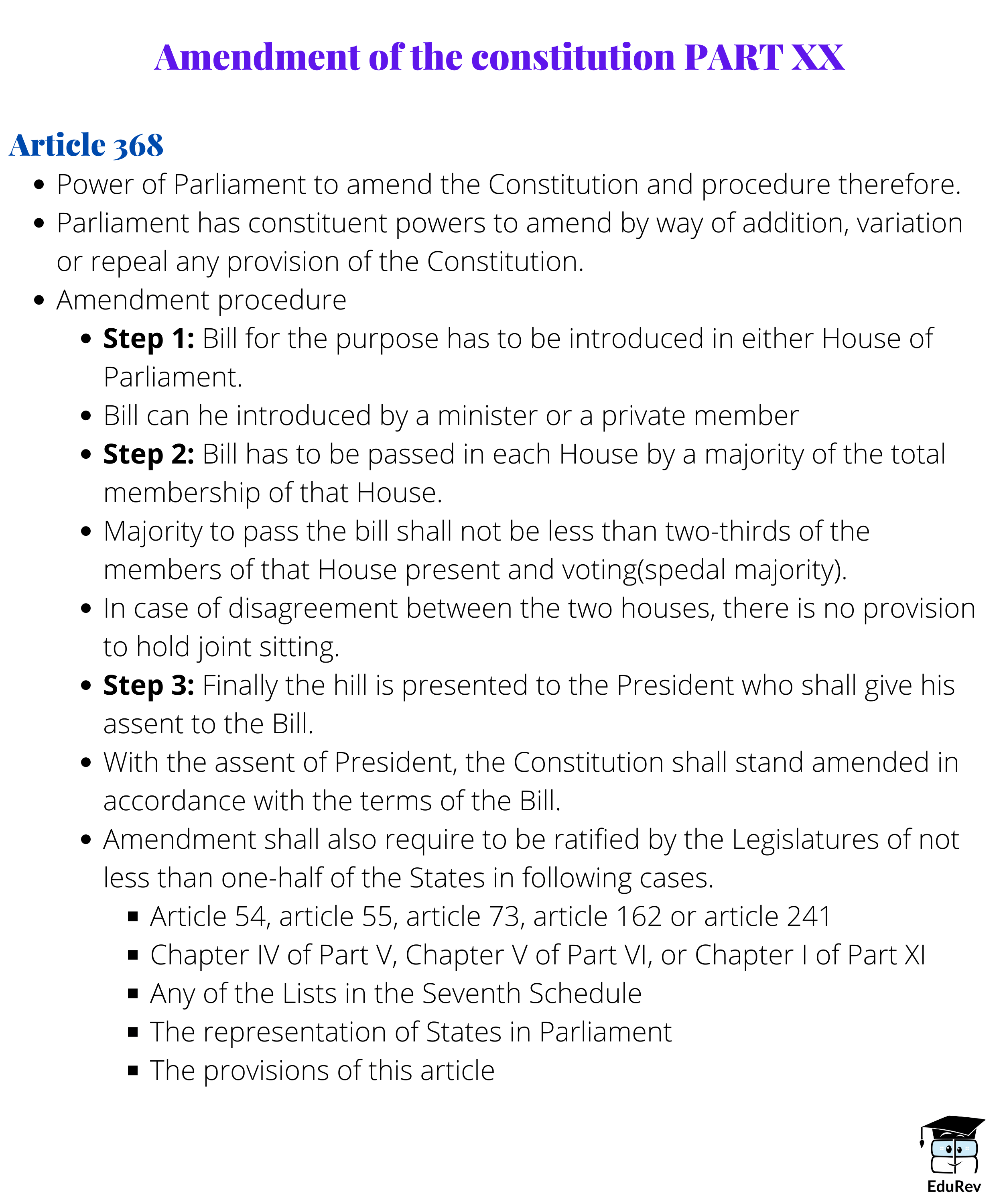UPSC Exam > UPSC Notes > Indian Polity for UPSC CSE > Mind Map: Amendment of the Constitution (Article 368)
Mind Map: Amendment of the Constitution (Article 368) | Indian Polity for UPSC CSE PDF Download

The document Mind Map: Amendment of the Constitution (Article 368) | Indian Polity for UPSC CSE is a part of the UPSC Course Indian Polity for UPSC CSE.
All you need of UPSC at this link: UPSC
|
151 videos|780 docs|202 tests
|
FAQs on Mind Map: Amendment of the Constitution (Article 368) - Indian Polity for UPSC CSE
| 1. What is the procedure for amending the Constitution according to Article 368? |  |
Ans. The procedure for amending the Constitution according to Article 368 involves introducing a bill in either house of Parliament, which must be passed by a majority of the total membership of that house and by a majority of not less than two-thirds of the members present and voting. The bill then needs to be ratified by at least half of the state legislatures before the President can give his or her assent.
| 2. Can any part of the Constitution be amended under Article 368? |  |
Ans. Yes, any part of the Constitution, including its preamble, can be amended under Article 368. However, there are certain provisions that cannot be amended, such as the federal structure of the Constitution, the secular character of the Constitution, and the basic features of the Constitution.
| 3. Are there any restrictions on the power to amend the Constitution under Article 368? |  |
Ans. While there are no explicit restrictions on the power to amend the Constitution under Article 368, the Supreme Court has held that the amending power cannot be used to alter the basic structure or essential features of the Constitution. This means that Parliament cannot amend the Constitution in a way that fundamentally changes its core principles.
| 4. Can the procedure for amending the Constitution under Article 368 be challenged in court? |  |
Ans. The procedure for amending the Constitution under Article 368 can be challenged in court if it is alleged that the procedure laid down in the article has not been followed correctly. However, the courts generally do not interfere with the substance of constitutional amendments unless they violate the basic structure of the Constitution.
| 5. Can the President refuse to give assent to a constitutional amendment passed under Article 368? |  |
Ans. The President does not have the power to refuse assent to a constitutional amendment passed under Article 368. Once a constitutional amendment bill has been duly passed by Parliament and ratified by the state legislatures, the President is required to give his or her assent.
Related Searches






















